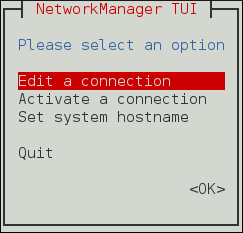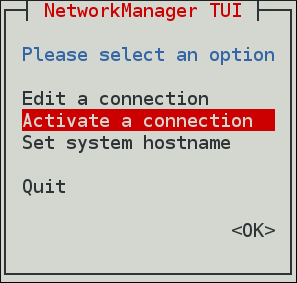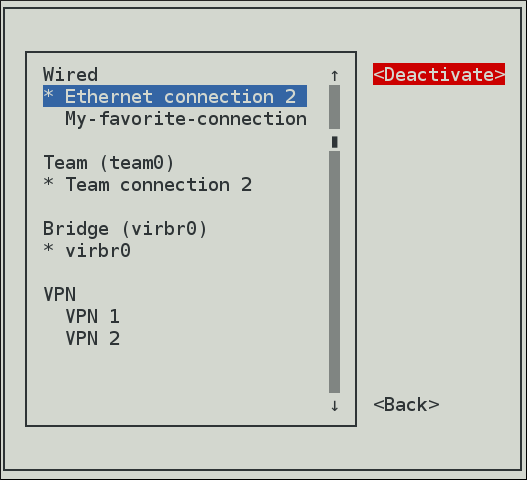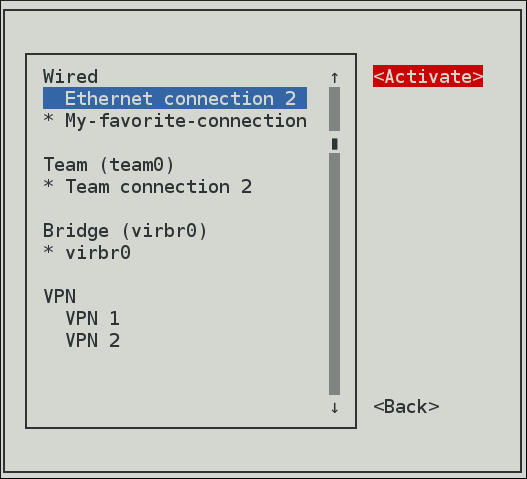3.2. Configuring IP Networking with nmtui
As a system administrator, you can configure a network interface using the NetworkManager's tool, nmtui. See Section 2.5, “NetworkManager Tools”.
This procedure describes how to configure networking using the text user interface tool, nmtui.
Prerequisites
- The nmtui tool is used in a terminal window. It is contained in the NetworkManager-tui package, but it is not installed along with NetworkManager by default. To install NetworkManager-tui:
~]#
yum install NetworkManager-tui - To verify that NetworkManager is running, see Section 2.3, “Checking the Status of NetworkManager”.
Procedure
- Start the nmtui tool:
~]$
The text user interface appears.nmtui
Figure 3.1. The NetworkManager Text User Interface starting menu
- To navigate, use the arrow keys or press Tab to step forwards and press Shift+Tab to step back through the options. Press Enter to select an option. The Space bar toggles the status of a check box.
To apply changes after a modified connection which is already active requires a reactivation of the connection. In this case, follow the procedure below:
Procedure
- Select the
Activate a connectionmenu entry.
Figure 3.2. Activate a Connection
- Select the modified connection. On the right, click the
Deactivatebutton.
Figure 3.3. Deactivate the Modified Connection
- Choose the connection again and click the
Activatebutton.
Figure 3.4. Reactivate the Modified Connection
The following commands are also available:
If no connection name is supplied, the selection menu appears. If the connection name is supplied and correctly identified, the relevant Edit connection screen appears.nmtui editconnection-name
If no connection name is supplied, the selection menu appears. If the connection name is supplied and correctly identified, the relevant connection is activated. Any invalid command prints a usage message.nmtui connectconnection-name
Note that nmtui does not support all types of connections. In particular, you cannot edit VPNs, wireless network connections using WPA Enterprise, or Ethernet connections using
802.1X.